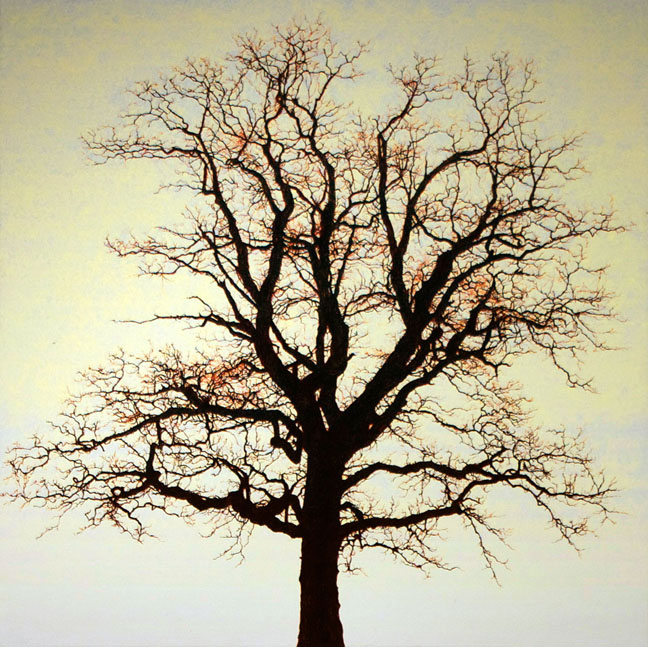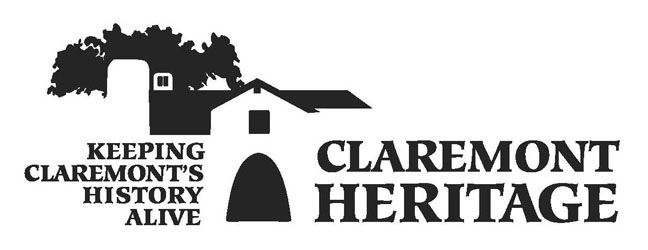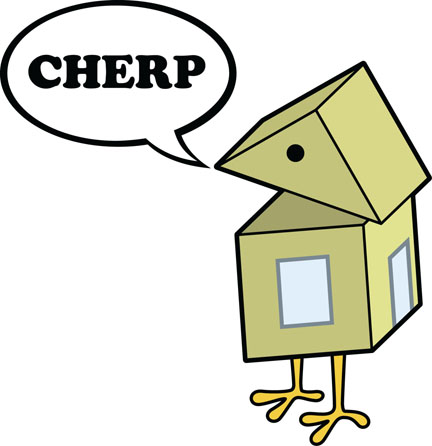Past Exhibition
Tree Speak: Interpretation of the Rustlings
Claremont Museum of Art
200 W. First Street, CA 91711
Tree Speak: Interpretations of the Rustlings presents visual interpretations, by artists working in the area, which ascend from the concept or image of trees and leaves in nature. A survey of Claremont’s long history as the City of Trees will be presented by Claremont Heritage. The city’s tree-planting tradition began in 1907 and many of the Heritage Groves and Landscapes remain today. With trees threatened by drought and disease, the City is seeking ways to preserve our Urban Forest for future generations.
Tree Speak features artists who have found their voice in nature: Steve Comba, Jeff Faust, Athena H Hahn, Amy Maloof, Barbara Schenck, Steve Schenck, Christopher Toovey, Georgette Unis, Dan Van Clapp and Jane Park Wells plus poetry by Beth Benjamin. The exhibition was organized by Rebecca Hamm with Julia Bourbois and David Svenson. Major support is provided by West Coast Arborists with generous additional support from Community Home Energy Retrofit Project (CHERP) and Rancho Santa Ana Botanic Garden.
Beth Benjamin
Beth Benjamin grew up in Claremont but lived her adult life in the Santa Cruz Mountains, making her life work with flowers, herbs and vegetables, first on an organic teaching farm called Camp Joy, then for a garden seed company. She has been writing poems since childhood. Her acquired taste runs towards a climate with oceans and rivers and a whole lot of rain, so having transplanted herself back down to southern California 6 years ago to care for family elders, the years of drought have been almost physically painful. As a lifelong gardener, it resonates in her body as if she has shirked her responsibilities when the tree tips start to wilt and brown, even though she can’t possibly water the whole state. This poem was an attempt to keep from despairing last February when it was just too dry to bear. This year’s green spring is balm to her soul.
Steve Comba
Steve Comba is a Southern California based artist and museum professional. He received his BA from the College of Creative Studies at UC Santa Barbara and his MFA from Claremont Graduate University. His paintings and drawings have been
shown in group and solo exhibitions throughout the southland. In addition to being a practicing studio artist, he has also worked in the museum field for the past 30 years. His experience in museums includes exhibitions, administrative, registrarial, and curatorial projects ranging from historical exhibitions of the works of Francisco Goya, Kathë Kollwitz and Rico Lebrun to numerous exhibitions examining the works of contemporary artists in the greater Los Angeles area. He was founding Vice President of the Claremont Museum of Art and curated five of that museum’s inaugural exhibitions. 2011, he designed and opened the Native American Collection Study Center at Pomona College. In 2012 he was appointed to the Board of Directors of the Western Museums Association. He is currently the Associate Director/Registrar at the Pomona College Museum of Art.
“My journey as a painter has ranged from abstracted minimalist explorations of the object as primary structure, with only those essential elements such as color and scale as the key communicator of meaning, to a decidedly Romantic impulse to tell “stories” through the traditions of representation. Though I’m still a strong advocate of the power and effectiveness of the abstract, theoretical and cerebral, I’m strongly drawn to the power of narration and representational imagery. All along this journey, my guiding influence has been Nature, or more accurately, natural form. I’m still interested in the essential elements that constitute the “made” object (color, shape, scale), yet I’m compelled towards reflecting the source: the light, shape, and timelessness of landscape and the innate, uniquely human desire to read meaning and narratives from pictures.”
Jeff Faust
Jeff Faust lived in Sandy Hook Conn., prior to moving to California. Jeff Faust’s compositions incorporate a variety styles and forms to create “subtle surrealism.” His oil paintings are described as transporting visions of nature, bridging both the natural and surreal. His motifs exist in unlikely juxtapositions, the result of the artist’s experience and imagination. To learn more about Mr. Faust’s art work, visit www.jefffaust.com
I am a self-educated artist and have been actively producing work and studying the world around me since early grade school. From that early age, I determined that I did not want or need another someone telling me how to use my eyes, mind or hands, rather, I wanted to embark on an art journey of my own making…..
I have had long time representation stretching over the years with galleries in Carmel, Seattle, the Bay Area, Nashville, Santa Fe. Currently, I’m represented by Pryor Fine Art in Atlanta, Georgia and Coda Gallery in Palm Desert, California.
Athena H Hahn
Athena H Hahn works and resides in Claremont. Ms. Hahn has been exhibited widely in the Los Angeles area, including the Cal State Fullerton Marilyn and Cline Duff Gallery and a 2010 exhibit at Bunny Gunner.
My father brought me to Claremont for the first time when I was eight. The huge eucalyptus, oak and palm trees filling the sky and inside the post office that beautiful mural. It was the first time I remember seeing a mural. The art in our home was mostly in books, there was a ‘Thinker,’ bookend holding some in place, a poster of ‘The Spiritual Pilgrim (15th century, Anonymous)’ and a white canvas that my father had done a black line drawing of my mother playing the guitar on. Claremont was the first place I had any real sense of what art could be and how it affected the shape of a community.
It is important to have people to help you see the world. I was very lucky to have known many of the artists whose work is shown at this museum. They helped me to see and they helped me learn to use materials to express my ideas. The most important thing however is that they shared their day to day life with me. Carl Hertel once said, ‘The work is in the work,’ and that is what I saw in every studio, that art had to do with showing up again and again to have a conversation through and with the materials. Artists like Michael Woodcock and Paul Soldner were always available to teach me not only how to use specific materials but to take me to meet other artists like Sam Maloof, Harrison Macintosh, and Jane Marquis to see what their solutions were. There was a time Paul Soldner struggled with the sweetness of his work and Susan Hertel worried that her subject might be too personal, in an ABEX art world. This is part of learning to be an artist too, to be vulnerable and unsure at times but to make the work anyway.
It is fitting that Rebecca Hamm chose my Mockingbird piece for this show. A mockingbird will learn hundreds of songs in its life and a pomegranate holds within its skin many seeds which traditionally symbolizes the community. For me style is language, I feel tied to this art community through my love of materials and craftsmanship and in looking to the natural environment as a source for that dialogue. It is a privilege to show here at the Claremont Museum, in a town which graciously supports nature and the art it grows.
Amy Maloof
Amy Maloof is a graduate of Claremont Graduate University (2005) and since has been compiling a noted oeuvre of mixed media artwork. She has been exhibited widely in the Los Angeles area, including a 2008 solo-exhibit at Bunny Gunner. Ms. Maloof lives and works in Pomona, CA.
I have been living with trees my whole life. I grew up in a house nestled in a lemon grove peppered with avocado, fig, grapefruit, apricot, persimmon,… and live oak trees with a eucalyptus windbreak on the northernmost border. I am familiar with the debris of trees and the ecosystem they provide. My work takes these familiarities and showcases found objects relocated in unexpected positions. Speaking for trees, living and deceased (wood), is like speaking for people. Trees are people too. Actually, trees are way cooler than people, but this is what happens when I twist their arms/limbs and project the human condition and psyche and society upon them and make them say what I want them to say. I am a tree.
Barbara Hueter Schenck
Barbara Schenck grew up in Claremont during the1950’s and ’60’s. She majored in art history and American Studies at Scripps College. Barbara has shared a forty year career with husband, Steve, running Schenck and Schenck Photography (now Schenck Images). Barbara’s own personal photographic image making began about 17 years ago when the Schencks converted to digital. Making strong compositions, mostly using distinct tonalities, is a primary interest.
In printing “Sutro Steps,” I wanted to keep the shadows deep without getting muddy. The photo has neither pure white nor black and the trunks have been dodged (lightened) to create depth in the rows. This extra emphasis enhances what I find amusing about the tree trunks since I see them walking along.
Steve Schenck
Steve Schenck has been working in art and photography for over 45 years. He had technical training in photography in the U.S. Navy during the Viet Nam War era. He used the GI bill to pay for a degree in fine art at Western Oregon University. After college, he managed a photo lab in Salem, Oregon.
In 1976, he married Barbara Hueter, whom he had known since childhood. They started their photography business in 1977. The original specialization was photography of fine art which was the outgrowth of both of their degrees and backgrounds.
The photography business has taken most of his time, but he continued making photographs for personal exploration and expression. Steve has worked in film using 8×10, 4×5, 120 and 35mm formats. He embraced the conversion to digital capture in 2002 and has found it to be a much broader tool for exploring the photographic medium.
I have been photographing this particular buckeye tree for over 20 years, on both with film and digital cameras. Originally it was a casual shot of the tree gripping precariously to a steep road cut. It evolved into an ongoing study of light, time of year, and subtle changes.
Christopher Toovey
Christopher Toovey is a product of his suburban surrounds and the middle ground view they provide between environments urban and rural. Currently a citizen of Claremont, Ca., he has been a resident , off and on, since 1958. He has been a studio painter and muralist since the early 70’s. He is the co-founder of the dA Center for the Arts, a Pitzer graduate, and a Milton Avery Foundation Scholar.
Trees and the landscape they inhabit speak about history and origin but also hope and the future. They are the flora that tend to outlive generations of fauna. They were here before you arrived and if all goes well still here long after you have departed. It takes more than five senses to listen to trees.
Georgette Unis
Georgette Unis received her MFA from the Claremont Graduate University. She has had several solo and group shows in California. Her artworks are in several permanent and private collections.
The paintings are an exploration of the manner in which a tree responds to its environment. Natural elements of wind, moisture, sun, density, as well as the elements of cultivation, all have a profound influence on its form and the texture of its bark.
Dan Van Clapp
B orn, Oshkosh, Wisconsin, 1945
I q 138
O range juice bottle washer, 1966
G raduate School, UCLA, 1967-1973 MFA
R oaming around Europe, 1967
A rmy, drafted, 1968-1970 (Trained Sniper)
P racticing Art for over 60 years
H oning my teaching skills as a Professor of Art
Y earning for world peace
S tudy
T hink
A pply
T ransform
E ngage
M entor
E lavate
N uture
T hink again
MaryAnn Voveris
Ms. Voveris attended Pitzer College from 1980 to 1982 and earned her Masters of Fine Arts in Painting and Sculpture from Claremont Graduate University in 1984. From 1988 to 2004, she taught art and design at various Southern California Universities including the University of La Verne, La Verne, California State Polytechnic University, Pomona, and Mount San Antonio College. In 2005 she began teaching in Shanghai, China. Since 2013, Ms. Voveris has taught in Quincy, Massachusetts. Her work has exhibited widely in Southern California galleries, including the Karl Bornstein Gallery in Santa Monica, University Art Gallery at the California State Polytechnic University, and the Muckenthaler Cultural Center, Fullerton.
My art enables me to best express and record some of the particularly special moments in time and some of the truly fascinating aspects of my excursion thru life. My work incorporates explorations into human potential and life’s possibilities as viewed thru my personal experiences. Thru my art I deal with my past, strive to understand my present and dream for my future. Surrounded again, in Boston, with what I call “forests” I often use tree forms as symbols/metaphors for human experience and spirituality.
Jane Park Wells
Jane Park Wells was born and raised in Korea. Jane Park Wells is a graduate of Scripps, College, Claremont, CA (BA, 1993) and Claremont Graduate University, Claremont, CA (MFA, 1996). Her paintings embrace both abstract minimalist and formalist traditions. To learn more about her work, visit http://www.janeparkwells.com.
All of my paintings have been in abstract form. The intersection of analytical models and intuitive process is at the heart of my work.
The introverted thinker in me is drawn to analytical systems – the parameters of the grid, the Fibonacci sequence, or the mathematical structure that produces rhythm and meter in music. In merging these methods with an instinctual use of color, textures and surface manipulation, my work represents a synthesis that asks the viewer to take their time and locate an interior equilibrium.
While I am embracing minimalist and formalist traditions established over time by many artists, particularly Agnes Martin, my objective is to offer an evolution that embraces optimism and the incorporation of a dynamic color palette. Colors like bright oranges, pinks, blues, rich blacks, and charcoal pigments introduce energy to honored methods of artistic inquiry.
Gallery






